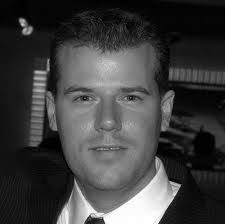 The Value of Data
The Value of Data
By Dustin Snell, CEO & Founder, Network Automation
Twitter: @NetAuto
Over the past decade, healthcare organizations have increasingly used technology solutions to streamline workloads, share vital health data and deliver better patient care. The federal government encouraged adoption of electronic health records (EHRs) by healthcare providers through the Medicare and Medicaid EHR Incentive Programs under the HITECH Act of 2009, which provides direct financial incentives to healthcare providers who demonstrate “meaningful use” of certified EHR technology. Ultimately, the goal is to improve patient care.
But healthcare providers and the companies that work with them also have to be mindful of protecting patient privacy. The Health Insurance Portability and Accountability Act (HIPAA) that passed during the Clinton Administration governs privacy protections by requiring that anyone who possesses health-related information to protect it. Specifically, health data custodians must keep private any identifying information associated with the health information they possess, including names, phone numbers, email addresses, medical records numbers, driver license information, etc.
Software automation has become a central part of enforcing HIPAA compliance and other standards, and tech-savvy healthcare organizations have already automated core business processes involving private information, including validation of insurance information, patient scheduling and notifications, medical billing and records management. As a result, healthcare organizations have had to integrate automated processes with legacy systems such as Star McKesson and Paragon.
So what are the next steps, beyond meeting privacy thresholds established by HIPAA and electronic solution adoption encouraged by the HITECH Act? Should the standards be reshaped to better control and monitor the actions of complaint organizations? If HIPAA compliance is just a checkbox item to be crossed off before an IT product release, does this limit or defeat the purpose of compliance? And in keeping with the spirit of the HITECH Act, isn’t it important to strive for better outcomes? Automation has a role to play in answering all of these questions.
Healthcare organizations and their partners recognize the value of ensuring privacy and integrating technology into their core operations to deliver better patient care, and the most forward-thinking are currently using automation to achieve these goals. They are streamlining workflows with highly secure automated processes that protect patient data, such as secure FTP file transfer functions that use passwords, keys, certificates, SSL/TLS Explicit/Implicit solutions as well as file encryption and decryption protocols with open PGP, PGP certificates, passphrases and keys.
AS2 (Applicability Statement 2) secure data transmissions and security logon authentication solutions further empower healthcare organizations to handle vital data while protecting patient privacy. The use of these tools – and the ability to easily build automated functions that incorporate them into the company’s workflow as new requirements arise – is crucial to advancing the goal of protecting sensitive information and maintaining HIPAA compliance.
But one often-overlooked advantage of automation is that it gives users the ability to define and automatically generate reports. When the HITECH Act established meaningful use standards, one goal was to generate efficiencies and improve access to important data, an objective the more technically skilled provider organizations have substantially met.
However, just as non-healthcare businesses have recognized the value of data and are using it to gain mission-critical consumer insights, the data generated in the healthcare sphere contains value beyond its utility in any one instance of healthcare delivery. And this is where compliant, automated data handling and reporting capabilities can play their greatest role: helping to truly transform healthcare delivery by enabling the identification of trends and management of population health.
About the author: Dustin M. Snell, the chief executive officer and founder of Network Automation, establishes the company’s strategic, operational and technical direction. Always holding true to the tenets of power tempered by functional design, Snell, an innovator and visionary, realized the relevant urge and need to automate the emerging cloud and virtualization markets. Under Snell’s leadership, Network Automation continues its track-record of continuous growth every year since inception.
